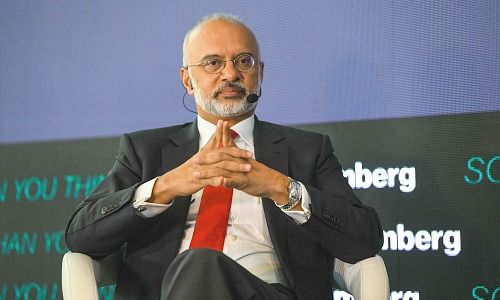As technology companies nibble on the banks' traditional business units, banks still have some aces up their sleeves to defend their turf. DBS Chief Executive Piyush Gupta lays out the competitive landscape.
In the past five to seven years, the value chain of banking has been unbundled, and banks are facing two types of technology companies encroaching into their space, according to DBS Chief Executive Piyush Gupta, who was speaking at «Bloomberg»'s «Sooner Than You Think» conference in Singapore.
The first group – which represents 99 percent of the non-traditional competitors – is made up by fintech startups. «Most will wind up being collaborators with banks because they have a very important handicap – customer database,» said Gupta. Hence, it is easier for them to plug into the existing customer base of DBS to roll out their solutions.
More Potent Forces
The remaining 1 percent of competitors are what he calls «tech fins», or giant companies such as Google, Alibaba, and Facebook who have half a billion or even more than a billion customers, and can build financial solutions for their huge customer base.
«They are far more potent forces in the competitive field,» said Gupta. «Southeast Asia is an important playing field to them and we do see greater competition,» he added.
Three Moats
While some of these big tech companies can enjoy tailwinds in new markets based on the degree of regulatory arbitrage, it is not always easy to replicate the same business model in a different country. As a result, traditional banks have certain moats over big technology companies, which did not start from this region.
For one, local banks have the knowledge of their regulatory landscape, and an understanding of the regulatory players involved. Secondly, they already have most of the infrastructure built up, whether they are in payments or settlements.
Thirdly, the understanding of risks is important in finance, Gupta highlighted. «It's easy to take risks in good markets, but risk models fall apart in bad markets,» Gupta said.
Embracing Partnerships
Acknowledging that speed is not always their advantage when compared to their non-traditional competitors, it is something lenders think they can work on.
While the value of exchange is not always easy to work through, DBS have had successful collaborations so far. «We've got a partnership with a telco in Indonesia (and) with a taxi company in India. In Singapore, we are the ‹paypal› for Carousell,» said Gupta. Carousell is one of the biggest online classifieds marketplace in Singapore.
Changing Pie of Tech Spend
DBS spends about S$1 billion a year on technology. Until recently, 90 percent was used to «keep the lights on», such as maintaining existing architecture and data centers. That left about S$100 million for new solutions.
However, as the cost of mainframes fall, and banks move away from licensed to open source software, the cost of maintenance has dropped significantly. «Now, half of the spending goes to new development rather than keeping the lights on,» Gupta said.
Branches Headed for Extinction?
The DBS chief believes the number of bank branches will shrink but not disappear entirely. DBS has refurbished certain bank branches to retain footfall and enhance banking experiences, as reported by finews.asia earlier.
In Singapore, the use of cash has dropped by 5 percent a year, and the rate of decline is accelerating. Gupta does not think that cash will disappear because people often prefer the anonymous form of payment. He cited a recent example of the National University of Singapore, which launched a campaign for all students to go cashless on the campus. «Within 48 hours, the students signed a petition to go against it,» Gupta said.




























